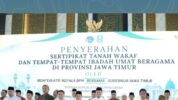The Influence of Traditional Thai Culture on Modern Fashion and Design
Thai culture, with its deep history and unique traditions, has a significant impact on the development of modern trends in fashion and design. This vibrant cultural imprint can be seen in various aspects, from street fashion to exclusive collections of well-known brands. Elements of traditional Thai art, such as hand embroidery, natural fabrics, and vibrant colors, are increasingly being integrated into contemporary collections. Platforms like https://parimatchth.com/ actively support the cultural features of the country, showing how traditions can be linked to innovations and global trends. Inspired by history and art, modern designers successfully use Thai motifs to create stylish and unique products that resonate not only in their homeland but also abroad.
Thai Culture: Traditions and Symbolism
Thai culture is deeply rooted in the philosophy of Buddhism, as well as in a respect for nature and art. Well-preserved ancient traditions in weaving, embroidery, wood carving, and unique elements of national clothing, such as the sarong and chongkrabong, are important symbols in the country’s culture. These traditions continue to reflect in modern fashion and design.
Fashion: A Return to Traditions
In recent decades, Thai fashion has undergone significant changes, but many contemporary designers continue to draw inspiration from national clothing, including details such as intricate patterns, bright colors, and fabrics that symbolize various aspects of Thai life. For example, traditional Thai silk, with its unique texture and vibrant colors, has become the foundation for many designer collections, both in Thailand and on international runways.
Famous Thai designers, such as Jim Thompson and Saranporn Chinwichit, are known for intertwining traditional elements with modern styles. For example, using Thai silk combined with innovative technologies allows for the creation of clothing that blends both traditional and contemporary features.
This influence is particularly noticeable in wedding fashion. Traditional Thai wedding attire, which includes exquisite embroidery, gemstones, and symbolism, embodies the richness of tradition and aesthetics. Wedding dresses made from Thai silk are often adorned with traditional embroideries symbolizing good luck and prosperity, as well as elements of nature, such as flowers and animals.
Interior Design: Integrating Traditions
Thai interior design has also absorbed many elements of traditional culture. In traditional Thai houses, such as lakhang (traditional wooden houses), key elements include open spaces, smooth lines, and a connection with nature. These elements have been adapted and reinterpreted in modern interiors. In interior design, elements like carved wooden panels adorned with golden and silver accents, fabrics with traditional patterns, and softly lit spaces are often used, creating an atmosphere of tranquility and harmony.
An interesting example is the use of Thai ceramics and bamboo in interior design. These materials, known for their eco-friendly approach and durability, play an important role in creating a modern interior that maintains a connection with nature and cultural heritage.
Architecture: Traditional Motifs in a Modern Context
Thailand’s architectural heritage has also had a significant impact on modern architecture. In traditional Thai architecture, an important element is the Eastern roof, whose slopes represent a characteristic feature known as the “temple style.” In modern architecture, these roofs are often used to create stylish and functional buildings while maintaining a traditional appearance.
Additionally, modern buildings often integrate elements of gardens and green roofs, which is also a reflection of ancient Thai architecture, where harmony with nature and creating spaces for relaxation and rest have always been a central focus. These elements add aesthetic appeal to buildings and symbolize unity with nature.
Fashion Trends: How Contemporary Designers Use Elements of Thai Culture
Thai culture continues to inspire designers worldwide, especially in the fields of fashion and interior design. Elements of traditional fabrics, ornaments, and symbols are being incorporated into clothing and accessory designs, creating unique collections that draw attention to Thai heritage.
Bold combinations of bright colors and intricate patterns, such as those found in traditional Thai fabrics, create striking fashion collections. Contemporary designers, such as Vatanika and Kritsda Panya, blend Thai motifs with Western trends to create unique outfits that are gaining popularity both in Thailand and abroad.
For interior designers and architects, using Thai elements like intricately carved wooden pieces, textile decorations, and elegant metal details provides an opportunity to transform a space, bringing harmony and warmth into it.
Conclusion
Traditional Thai culture continues to have a significant influence on modern fashion and design, creating a unique space for creativity and innovation. Drawing inspiration from Thai crafts, architecture, and textiles, designers create works that connect the past and the present, providing a contemporary style with deep roots in tradition. Thailand remains an important cultural center, whose contribution to global fashion and design continues to develop, offering new ideas and inspiration for future generations.



























Tinggalkan Balasan